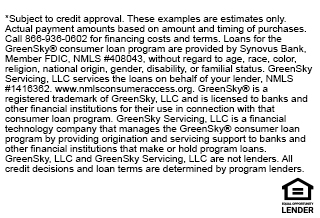Professional Home Energy Audits
Professional energy audits generally go into great detail. The energy auditor should do a room-by-room examination of the residence, as well as a thorough examination of past utility bills. Many professional energy audits will include a blower door test. Most will also include a thermographic scan. There's also another type of test—the PFT air infiltration measurement technique—but it is rarely offered.
Preparing for an Energy Audit
Before the energy auditor visits your house, make a list of any existing problems such as condensation and uncomfortable or drafty rooms. Have copies or a summary of the home's yearly energy bills. (Your utility can get these for you.) Auditors use this information to establish what to look for during the audit. The auditor first examines the outside of the home to determine the size of the house and its features (i.e., wall area, number and size of windows). The auditor then will analyze the residents' behavior:
- Is anyone home during working hours?
- What is the average thermostat setting for summer and winter?
- How many people live here?
- Is every room in use?
Your answers may help uncover some simple ways to reduce your household's energy consumption. Walk through your home with the auditors as they work, and ask questions. They may use equipment to detect sources of energy loss, such as blower doors, infrared cameras, furnace efficiency meters, and surface thermometers.
Selecting an Energy Auditor
There are several places where you can locate professional energy auditing services. Your state or local government energy or weatherization office may help you identify a local company or organization that performs audits. They may also have information on how to do your own audit. Your electric or gas utility may conduct residential energy audits or recommend local auditors. Also check your telephone directory under headings beginning with the word "Energy" for companies that perform residential energy audits. See the Learn More section on the right side of the page (or below if you've printed it out) for more auditor resources.
Before contracting with an energy auditing company, you should take the following steps:
- Get several references, and contact them all. Ask if they were satisfied with the work.
- Call the Better Business Bureau and ask about any complaints against the company.
- Make sure the energy auditor uses a calibrated blower door.
- Make sure they do thermographic inspections or contract another company to conduct one.
Benefits of getting an Energy Audit:
- Make your home more comfortable while using less energy
- Prevent unnecessary wear and tear on your Heat and A/C Equipment
- Lower your energy bill
- Reduce allergens or other airborne contaminants
- Save money
Basic Energy Assessment
HVAC
Inspect and identify operating efficiencies of major HVAC components and systems including thermostats, humidifiers, filters, fans, air flow, duct leakage, and UV equipment.
Attic
Assess insulation, ventilation, and radiant barrier where accessible.
Lighting
Record indoor incandescent lighting watt, type and location.
Water
Survey domestic water systems, including water heater, toilets and shower heads.
Weatherization Measures
Investigate for sites of air penetration into the house for quick and inexpensive solution opportunities.
Other Leak Detection
Perform Blower Door test to calculate air leakage through duct systems. Photograph conditions which require more immediate attention.




